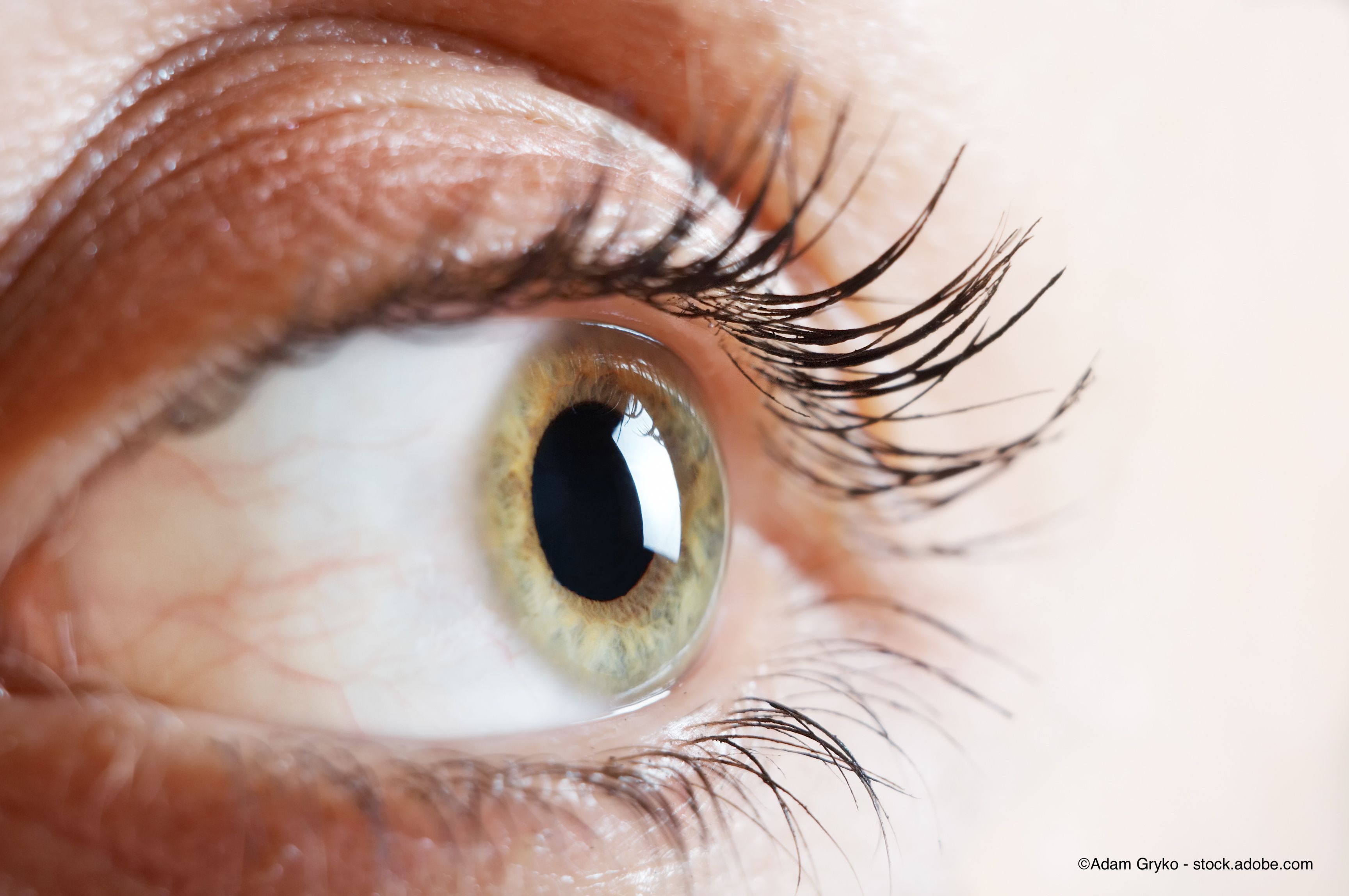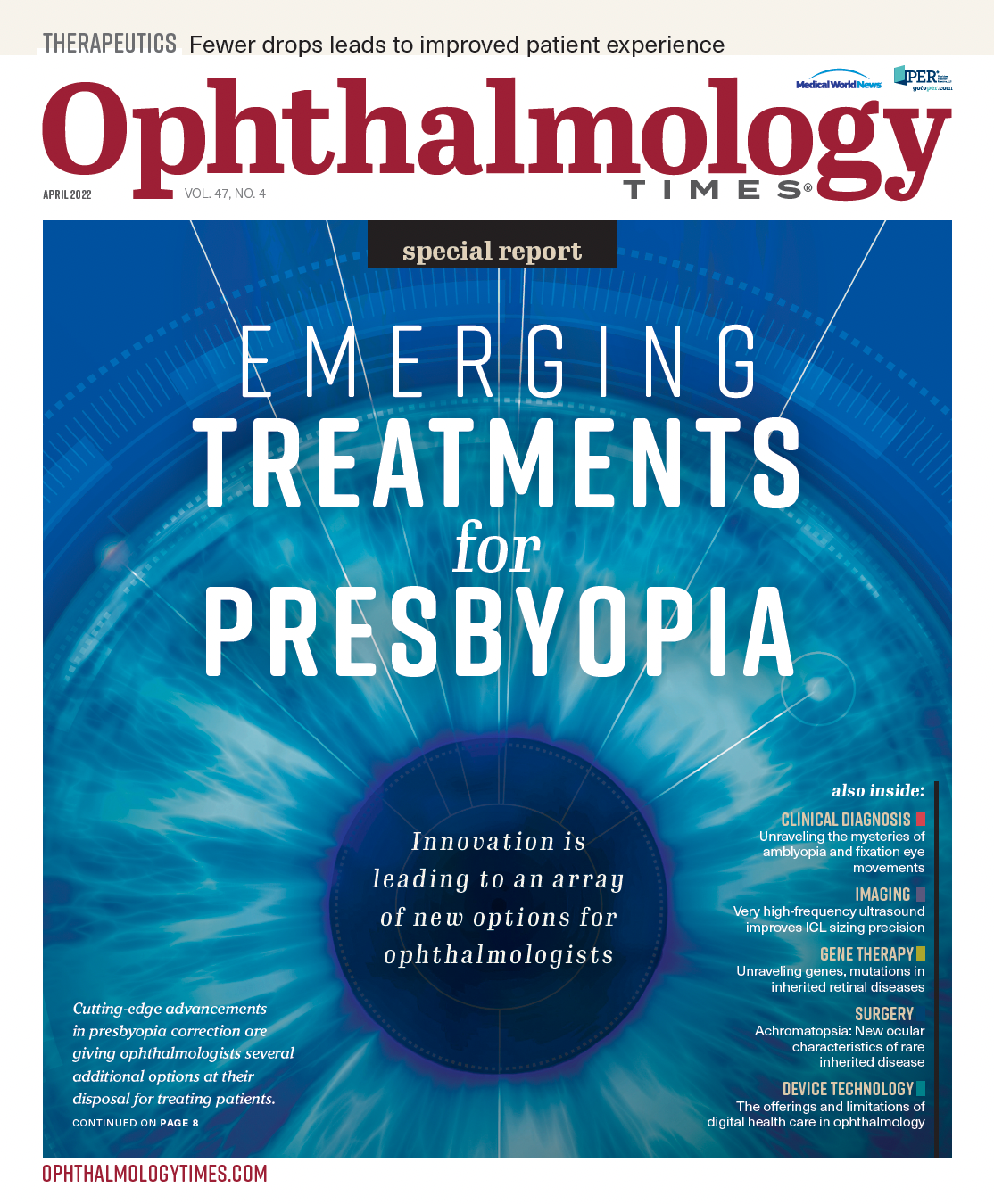Publication
Article
Digital Edition
Bringing biologics to eye health
Author(s):
Ophthalmologists, optometrists gain nonpharmacological treatment options for some of the eye’s most complex issues, providing better outcomes.
Special to Ophthalmology Times®
With all due respect to how quickly health care evolves, it was not all that long ago that regenerative medicine—an industry that is expected to grow to approximately $152 million annually by 20261—was viewed to be more science fiction than actual medical science. But that was the prevailing sentiment as recently as the early 1990s. Despite the significant medical breakthroughs we had already begun to achieve at that time, such as the Human Genome Project, cloning, radiosurgery, and the SmartPill, the first known usage of the term regenerative medicine in 19922 was simply attributed to something the future of hospitals would conduct.

Today that future has clearly become reality, as the science of regenerative medicine and its related products can be utilized to help the body heal itself in a variety of ways when administered appropriately. As we have progressively learned more about the hundreds of different biological pathways in the human body, we’ve also gained a better understanding of how the body heals naturally through those pathways. From chronic skin wounds and traumatic brain injuries to diabetes and certain cancers, the use of regenerative medicine has grown exponentially.
From an ophthalmological standpoint, the science—specifically through the use of biologic products, or those products that are produced from or contain components of living organisms—has proven effective in treating one of the most chronic and debilitating conditions, affecting some 350 million people worldwide: dry eye disease (DED). DED is a condition that produces a myriad of symptoms that develop due to a loss of homeostasis in the eye’s tear film. It can be managed with the introduction of biological eye drops administered individually or in tandem with other modalities based on disease severity to return tear film back to a state of homeostasis while preventing further disease progression and improving the corneal surface.
Basics of biologics and regeneration
Biologics include a range of products such as vaccines, blood and blood components, allergenics, somatic cells, gene therapy, tissues, and recombinant therapeutic proteins.3 They are derived by being isolated from a variety of natural sources, typically proteins from humans, animals, or microorganisms. They can also consist of sugars, nucleic acids, or a combination of such substances. Additionally, biologics can be actual living entities, such as cells and tissues. They are acellular and complex, but they are not a pharmaceutical and are therefore less likely to produce adverse effects in patients.
Biologics work by allowing providers to replace the natural body elements that are found in humans when embryos are in utero, which is a controlled environment that provides all the nutrients, hormones, cytokines, and proteins that the body requires. It’s also the best-known healing environment and the only environment that can produce true scarless healing, which has always been ideal from a historical perspective. The ability to heal without scarring underscores some of the significant benefits that biologics offer in the treatment of DED and other corneal disorders, such as meibomian gland dysfunction, which is the most common cause of DED, and other diseases that include any inflammatory component. There is evidence that shows that the use of a biologic on the cornea can significantly help to keep the tear film healthy. This is an important factor because when meibomian glands are functioning properly, they produce the correct amount of lipids to cover the tear film surface so we don’t experience the evaporative loss of the aqueous layer and the dryness/inflammation that results.
Ophthalmologists and optometrists are also becoming more aware of the idea that if we can keep the corneal surface in good overall health, we can also decrease complications and affect outcomes with cataracts (both before and after surgery), photorefractive keratectomy refractive surgery, and LASIK surgery, all of which can also result in inflammation.
Impact of inflammation
The body heals similarly throughout, with certain variations. Much like in the healing of chronic skin wounds and ulcers, a lack of healing can occur on the corneal surface if inflammation persists. Some investigators have described DED as “a vicious cycle of corneal epithelial damage and inflammation.”4 When the body is not in homeostasis, proteins will change depending on different environments and become more or less inflammatory. As they change, they either change their environment to one that’s more of a chronic inflammation or to a healing environment. To heal properly, the right environment and the right proteins are needed to allow the body to regenerate and stimulate its own stem cells.
When chronic inflammation is present, patients are at higher risk for cancer because their cells continuously try to regenerate but can’t quite do so because of the nature of the inflammatory environment. However, when we can control the inflammation, the patient has more of a microenvironment, in which regeneration can also be better controlled. When treating DED, various biological options are available, including the following:
- Autologous serum, a blood-derived eye drop that mimics the biochemical properties of natural basal tears to heal the ocular surface epithelium.
- Autologous platelet-rich plasma, a preparation that concentrates platelets in a small volume of plasma to treat the ocular surface.
- Preservative-free allogeneic drops that can be used to stimulate stem cell communication without cell contact.
In particular, allogeneic drops are becoming more commonly prescribed as a maintenance therapy for mild to moderate or severe DED, especially when there are corneal findings such as punctate epithelial keratitis. Other conditions that respond to this treatment include neurotrophic keratitis and exposure keratitis. These drops can also be used in patients with DED who have not responded to traditional therapies and patients who have had postsurgical ocular surface issues.
The use of biologics can also decrease the inflammatory response associated with graft-vs-host issues that can arise after a corneal transplant or other surgical procedures in the cornea that are common today. Other autoimmune diseases that result in chronic inflammation, such as Sjögren syndrome, Stevens-Johnson syndrome, diabetes, and essentially any condition in which the immune system is turning on itself, are also candidates for biological therapies.
The future from here
When we follow the science, progression has been enhanced by our increased knowledge of pathways. We don’t know everything, but we do know about the major pathways and the ones that cause the most and least amount of inflammation. However, the ability to regenerate is the novel part of these treatments. That opportunity is not available with drugs, surgery, or radiation.
As the science behind regenerative medicine continues to evolve and the field continues to diversify, we will see more iterations of treatments that will help us to care for patients across the health care spectrum. We will also continue to improve on the effectiveness of treatments and how to administer those treatments appropriately as we continue to better understand the human body and its pathways. We will also see more regulation and safer care planning.
According to the US Food and Drug Administration (FDA), there continues to be broad marketing of unapproved products5 described to be regenerative medicine therapies, such as natural growth hormones. Before approval, these products require FDA oversight in clinical trials. The FDA has received reports of blindness, tumor formation, infections, and more because of the use of unapproved products, and all physicians are urged to act ethically and legally when deciding to prescribe a biologic to any patient. Truth be told, there are not yet many products on the market that fit the true biologic category, especially for the eye. The FDA also warns that regenerative medicine therapies have not been approved for the treatment or prevention of the following conditions/issues: COVID-19, acute respiratory distress syndrome, autism, macular degeneration, blindness, chronic pain, fatigue, neurological disorders, cardiovascular disease, pulmonary disease, or orthopedic conditions.
There is also misinformation that exists on the general use of stem cells to improve various corneal surface problems. However, the problem with stem cells in this regard is that they require a delivery system that will typically result in injection. There are reports of stem cell injections into the eye, causing many complications for patients. In addition, the utilization of stem cells is not ideal because they are difficult to grow, and if they are not treated correctly within the appropriate microenvironment and do not receive needed nutrients, they will die. Stem cells also act differently throughout different parts of the body because of the microenvironments they are in, and if they are not working properly, they never quite heal. We can accomplish more without stem cells when working with products that are acellular, which tend to offer better delivery systems, such as drops, and adverse effects are not of particular concern. Medicine in the future will likely not need cells. Amniotic membrane products—although in existence for nearly 100 years—are also somewhat complicated because they cannot be put into a liquid form and must be removed and replaced to be effective.
We also expect to see more progress in the aspect of preventive care through biologics. Depending on when we initiate treatments, outcomes can significantly be improved. For instance, if we incorporate a biologic at the point of mild or moderate DED, we could see significant improvement and potentially prevent severe cases by allowing the body enough assistance to get to a healing phase and not to a phase of chronic inflammation and scarring. In that sense, regenerative medicine and regenerative biologics hold a prominent place in our present health care space and better hope for the future of medicine for almost any part of the human body.
References
1. Regenerative medicine market size to hit USD 151,949.5 million by 2026. News release. Globe Newswire; March 7, 2022. Accessed online.
2. A very brief history of regenerative medicine. Genesis Biologics. May 18, 2018. Accessed online.
3. What are “biologics” questions and answers. FDA news release. February 6, 2018. Accessed online.
4. Promising novel treatment for dry eye disease revealed by new research. News release. University of Manchester; January 13, 2022. Accessed online.
5. Important patient and consumer information about regenerative medicine therapies. FDA. Updated July 9, 2021. Accessed online.
C. Randall Harrell, MD
P: 877/206-0706
Harrell is the founder, chairman, and CEO of Regenerative Processing Plant, LLC. During a career that has spanned over 30 years, Harrell also has experience as a research scientist at Emory University in Atlanta, Georgia, where he studied immunology, and was previously recruited to study at Texas Medical Center in Houston, Texas, the largest medical center in the world. Harrell was nominated for the Nobel Peace Prize for his medical missionary work in Central America.

Newsletter
Don’t miss out—get Ophthalmology Times updates on the latest clinical advancements and expert interviews, straight to your inbox.




